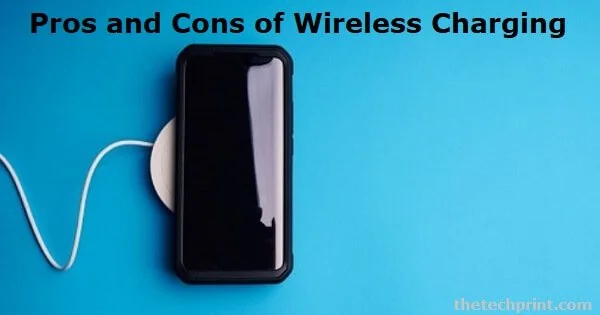
Wireless charging has moved from a futuristic concept to a widely adopted technology over the past decade. As of 2025, it’s become a common feature in smartphones, wearables, electric vehicles, and a growing number of other gadgets. The convenience of powering up devices without plugging in cables appeals to many, but like any technology, wireless charging has its strengths and weaknesses.
This article provides an up-to-date overview of the pros and cons of wireless charging in 2025, helping you understand whether it fits your lifestyle and tech needs.
What Is Wireless Charging?
Wireless charging, also known as inductive charging, uses electromagnetic fields to transfer energy between a charging pad and a compatible device. Instead of connecting a cable directly to the device, the user simply places it on or near a charging surface to start the power transfer. The most common standard is Qi wireless charging, which most smartphones and accessories support.
Recent innovations have improved wireless charging speeds, efficiency, and convenience, but the technology still faces challenges in some areas.
Pros of Wireless Charging in 2025
1. Unmatched Convenience
One of the biggest advantages of wireless charging is the sheer convenience it offers. No more fumbling with cables, trying to find the right plug orientation, or worrying about worn-out connectors. Simply place your device on a charging pad or stand, and it begins charging automatically.
This ease of use is especially valuable in environments like offices, cars, cafes, and airports, where wireless charging stations are becoming increasingly common. It enables quick top-ups without interrupting workflow or leisure activities.
2. Reduced Wear and Tear
With wireless charging, the physical connectors on your devices experience less wear and tear since you no longer plug and unplug cables frequently. This can extend the longevity of charging ports and reduce the risk of damage over time.
For devices that have waterproof or dustproof certifications, wireless charging also helps maintain their integrity by minimizing openings where water or debris could enter.
3. Cleaner and More Organized Spaces
Wireless charging contributes to decluttering your desk or nightstand by eliminating tangled cables. It promotes a cleaner aesthetic and can help reduce frustration caused by messy cords.
In public places and shared environments, wireless chargers provide a hygienic solution since users avoid handling cables that others have touched.
4. Cross-Device Compatibility
The Qi standard’s widespread adoption means many devices—from smartphones and earbuds to smartwatches—can charge on the same pad. This universal compatibility simplifies charging needs, making it easier to power multiple gadgets without juggling different cables and adapters.
Manufacturers continue to improve interoperability, allowing faster charging speeds and more efficient energy transfer across brands and device types.
5. Advances in Charging Speeds and Efficiency
While wireless charging was once criticized for being slow and inefficient, technology has made significant strides. By 2025, many wireless chargers support fast charging comparable to traditional wired methods, with some delivering up to 50 watts or more.
Improvements in coil design, power management, and alignment detection help minimize energy loss and heat generation, making wireless charging more practical and safe for daily use.
Cons of Wireless Charging in 2025
1. Slower Charging Compared to Wired
Despite advancements, wireless charging generally remains slower than the fastest wired charging solutions. High-capacity devices or those with large batteries often take longer to reach a full charge wirelessly.
For users needing a rapid power boost—such as during a short break or emergency situation—wired charging still holds the advantage in speed and efficiency.
2. Limited Charging Range and Alignment Sensitivity
Wireless charging requires precise alignment between the device’s receiver coil and the charging pad’s transmitter coil. Misalignment can cause slower charging speeds or even failure to charge.
Additionally, wireless chargers typically require direct contact or close proximity, which limits how and where you can place your device. Unlike wired chargers, you cannot use your phone comfortably while it’s charging unless you use a stand designed for this purpose.
3. Heat Generation and Potential Battery Impact
Wireless charging generates more heat than wired charging due to energy transfer inefficiencies. Excessive heat can potentially degrade battery health over time if devices aren’t properly designed to manage temperature.
Modern devices include thermal management systems to mitigate this risk, but users should still avoid placing devices on wireless chargers in hot environments or covering them with materials that trap heat.
4. Higher Cost and Accessory Requirements
Wireless charging accessories tend to be more expensive than traditional chargers. Quality wireless charging pads, stands, and multi-device stations can carry a premium price, which may deter budget-conscious consumers.
Moreover, older devices without built-in wireless charging require additional accessories like receiver cases or adapters, adding complexity and cost.
5. Environmental Concerns
The rise in wireless charging adoption means more electronic accessories and power adapters enter the market. While wireless charging pads simplify cable management, they also contribute to electronic waste.
Energy inefficiencies, though improving, still mean higher power consumption compared to wired chargers. Consumers mindful of environmental impact may prefer to use wireless charging selectively rather than exclusively.
Final Thoughts
Wireless charging in 2025 is no longer a futuristic luxury but a practical and convenient option embraced by millions worldwide. Its benefits—convenience, reduced wear, cleaner spaces, and cross-device compatibility—make it appealing for everyday use.
However, it’s important to recognize its limitations: slower charging speeds compared to wired, sensitivity to alignment, heat concerns, and higher accessory costs. Depending on your priorities—whether speed, convenience, or budget—you may find wireless charging an excellent supplement or, in some cases, a primary charging method.
As technology continues to improve, future wireless chargers are expected to become faster, more efficient, and offer greater flexibility, potentially addressing many current drawbacks. For now, understanding the pros and cons allows consumers to make informed choices tailored to their lifestyle.
Whether you’re a tech enthusiast or an everyday user, wireless charging is a powerful convenience that, when used thoughtfully, can significantly simplify how you power your devices.